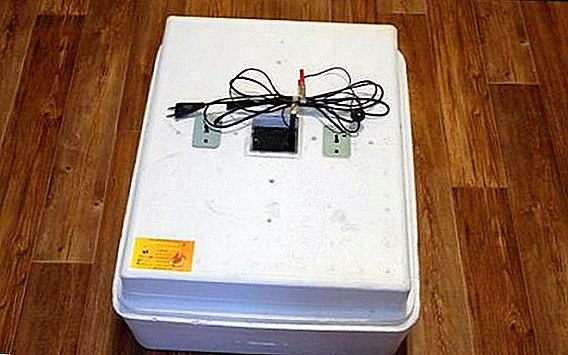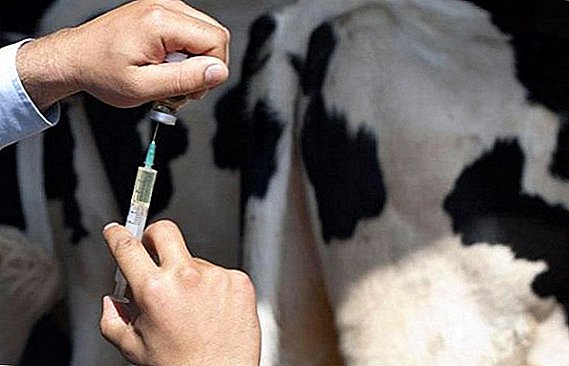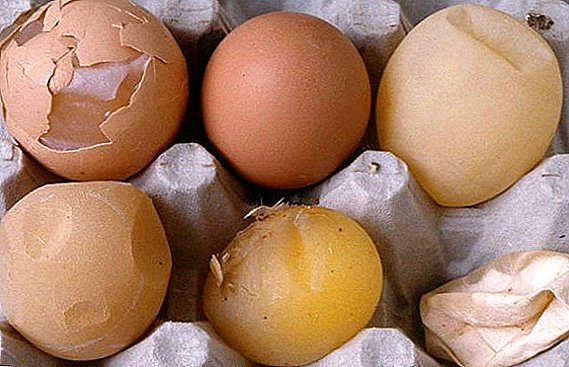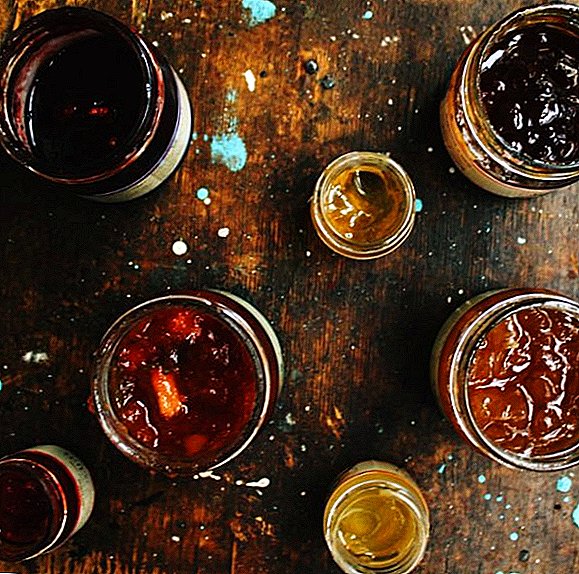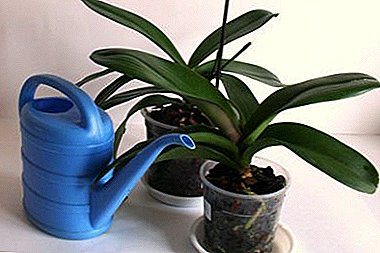 Lactic acid, contrary to the stereotypes associated with the name of the drug, is a wonderful antiseptic and is used in veterinary medicine not only as a disinfectant, but also as a medicine for the treatment of other diseases of pets.
Lactic acid, contrary to the stereotypes associated with the name of the drug, is a wonderful antiseptic and is used in veterinary medicine not only as a disinfectant, but also as a medicine for the treatment of other diseases of pets.
In the case of rabbits, this substance, with the right dosage, can help against many ailments - consider the features of its use in the article.
What is lactic acid for rabbits?
Even a brief characterization of a substance allows one to be convinced of its usefulness for animals:
- color — yellowish white (milk color);
- smell - slightly sour;
- taste - sour;
- consistency - density at syrup level;
- danger - the substance is not toxic;
- main properties - solubility in water, oil, glycerin and alcohol.
 For the digestive system of rabbits, this tool is extremely useful:
For the digestive system of rabbits, this tool is extremely useful:
- helps in the processing of roughage and prevents stomach problems;
- positive effect on the digestive processes;
- fights pathogenic microbes in the digestive tract;
- relieves spasms in the sphincters of the gastrointestinal system;
- strengthens the immune system, regulates metabolism and reduces the acute effect of gastrointestinal disorders - gastritis, colitis, flatulence, etc.
How to dilute: instructions, dosage
Rabbitheads use the substance in two ways - internal and external. With the help of this universal remedy, it is possible to treat and stimulate the digestive system of animals, lubricate wounds on the skin, add it to the composition for cleaning enclosures and disinfect inventory. Consider its use for internal and external use in more detail.
Internal use
 Lactic acid is often used for bloating in rabbits. When they get ill with coccidiosis, trichomoniasis, gastritis or enteritis, lactic acid is added daily to rabbits in a drinking trough, spreading it in water - 4-7.5 ml of solution 2% or 3-5 ml of solution 3 per person. % Such solutions have a beneficial effect on the gastrointestinal microflora in flatulence or flatulence.
Lactic acid is often used for bloating in rabbits. When they get ill with coccidiosis, trichomoniasis, gastritis or enteritis, lactic acid is added daily to rabbits in a drinking trough, spreading it in water - 4-7.5 ml of solution 2% or 3-5 ml of solution 3 per person. % Such solutions have a beneficial effect on the gastrointestinal microflora in flatulence or flatulence.
Farmers often use lactic acid to prevent coccidiosis in young rabbits (up to 45 days old). Two tablespoons of the drug is diluted in 10 liters of water, which is distributed in the drinkers kids.
For the treatment of coccidiosis in rabbits using the drug "Solikoks".
If we talk about prevention, it will not be superfluous for adult rabbits, which can be given acid for a beneficial effect on the intestinal microflora and the relaxation of sphincters - both gastric and intestinal.
The use of lactic acid leads to such positive changes in the body of the animal:
- removes slags and prevents their formation;
- counteracts harmful microflora;
- reduces the accumulation of decay products of organic matter;
- soothes the animal, which then begins to build muscle mass;
- It is an excellent prevention of infectious and parasitic diseases.
Outdoor use
Lactic acid is a good antiseptic, which allows you to fight skin infections and the effects of traumatic injuries.
Important! Rabbit leaders recommend disinfecting feed with lactic acid. In this case, it is enough to dissolve in water 0.5 mg of substance per 1 kg of feed. The solution is made in a concentration of from 1 to 4%.
Depending on the percentage content in the solution, the drug may have different therapeutic effects:
- 10% - keratolytic (softening the skin with dermatosis, warts and calluses);
- 15-30% - antiseptic (disinfection of tumors, injuries and horny properties);
- 20-40% - cauterizing (for mucous surfaces and skin).
 Lactic acid solution is used to treat ulcerative lesions of the skin. In addition to its disinfecting properties, the substance is a good preservative.
Lactic acid solution is used to treat ulcerative lesions of the skin. In addition to its disinfecting properties, the substance is a good preservative.
Disinfection enclosures
Inventory used to care for rabbits, as well as enclosures for their content, must be treated with a solution of lactic acid. The preparation is sprayed on feeding troughs, auxiliary tools, floors and walls of the room in which rabbits contain. Half an hour after disinfection, the room is aired, and the remnants of the substance are washed off with water.
Novice rabbit growers should know how to deal with such diseases of rabbits as coccidiosis, pasteurellosis, myxomatosis.
Disinfection is usually carried out in two ways - for large farms spraying means through humidifiers is more suitable, and for small premises with open-air cages you can use handicraft methods. In the first case, a 20% solution of lactic acid is put into the air humidifiers, which evenly spray the preparation around the room. The second method involves heating the substance to a gaseous form and spreading this evaporated mass through conventional fans.  The undoubted advantage of both methods of disinfection is that it does not need to remove animals from enclosures. In addition, part of the drug will be absorbed by rabbits through the respiratory system, which also has a beneficial effect on their health.
The undoubted advantage of both methods of disinfection is that it does not need to remove animals from enclosures. In addition, part of the drug will be absorbed by rabbits through the respiratory system, which also has a beneficial effect on their health.
Learn what to do if the rabbit is lying on its side and does not get up, as well as how to help the rabbit if he sneezes.
Contraindications
There are practically no contraindications to the use of the drug, because it is a natural product that does not even cause an allergic reaction. Negative consequences can occur only in rare cases with individual intolerance. Under the conditions described in the instructions, including when implementing the recommendations on dosage, no side effects from the use of the drug were observed.
There are several cases in which rabbits should not be given lactic acid because it can affect the effect of treating certain serious diseases:
- acute gastritis;
- wet ulcers;
- renal failure;
- increased acidity of the body.
 The use of the drug does not reduce the quality of the meat of animals, so they can be killed at any stage and dosage of the intake. The absence of a quarantine period of taking the medicine guarantees the absence of its influence on the taste of meat.
The use of the drug does not reduce the quality of the meat of animals, so they can be killed at any stage and dosage of the intake. The absence of a quarantine period of taking the medicine guarantees the absence of its influence on the taste of meat.
Did you know? Lactic acid, despite the stereotype that it is the cause of muscle pain and fatigue, is not to blame. It turned out that the pain causes the process of tissue recovery after stress, and not their fact. Soreness and swelling of the muscles after exertion is caused by leakage of fluid from some broken muscle cells.
Storage conditions
Hermetically packaged vial of lactic acid can be stored for 10 years. In this case, the temperature storage mode can be in the range from -30 to + 45 ° С. Although this drug has no significant side effects and consequences of overdose, it should be kept on a general basis for the storage of medical devices - in places inaccessible to children and animals.
Not always farmers can appreciate the effect of lactic acid on the body of their pets. And this applies not only to rabbits - with the help of this tool it is possible to carry out treatment or prophylaxis even in large livestock farms, without significant expenditures on other medicines.
Video: Lactic acid for the prevention of coccidiosis
Reviews



